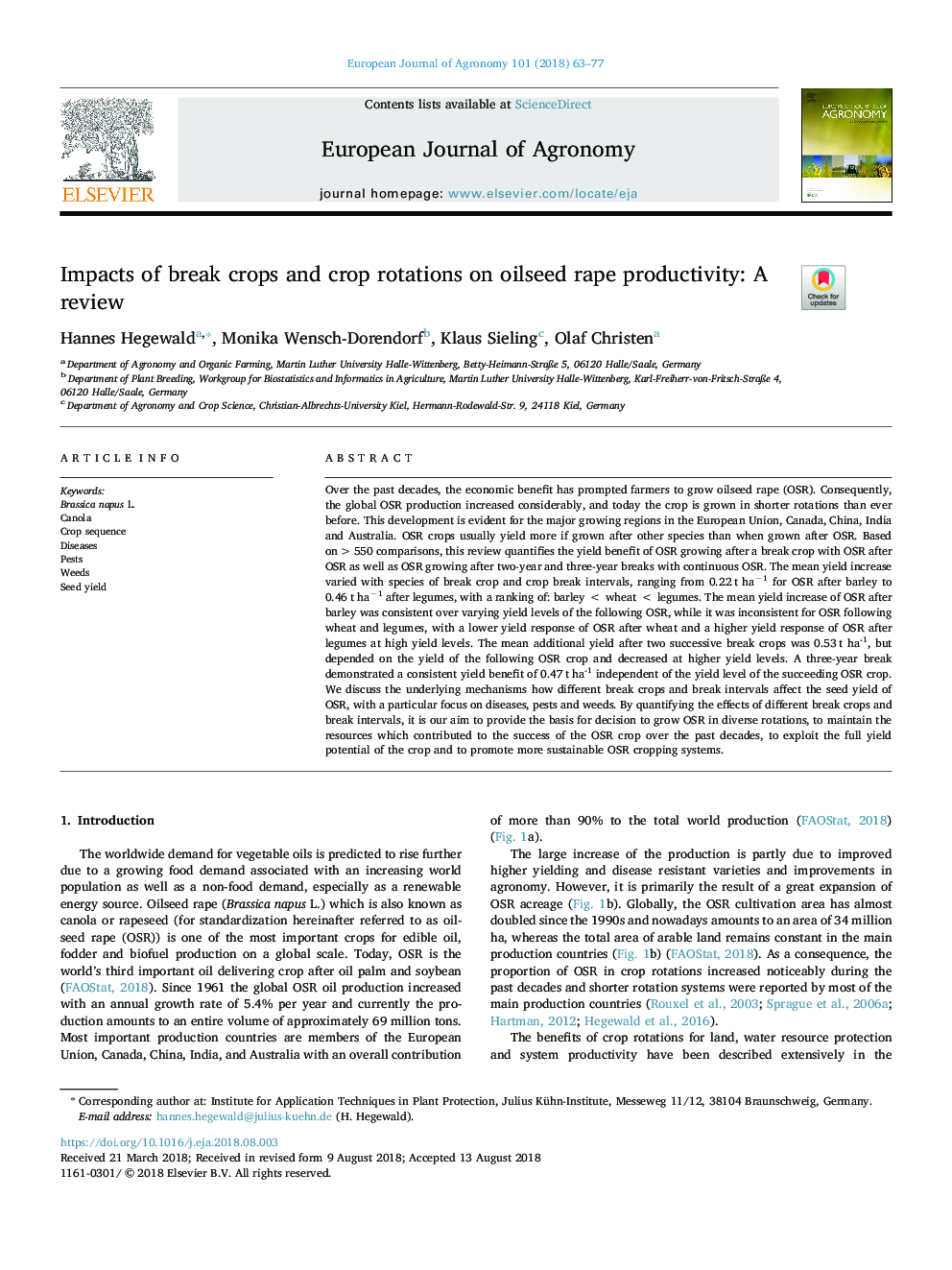| Article ID | Journal | Published Year | Pages | File Type |
|---|---|---|---|---|
| 10138728 | European Journal of Agronomy | 2018 | 15 Pages |
Abstract
Over the past decades, the economic benefit has prompted farmers to grow oilseed rape (OSR). Consequently, the global OSR production increased considerably, and today the crop is grown in shorter rotations than ever before. This development is evident for the major growing regions in the European Union, Canada, China, India and Australia. OSR crops usually yield more if grown after other species than when grown after OSR. Based on >550 comparisons, this review quantifies the yield benefit of OSR growing after a break crop with OSR after OSR as well as OSR growing after two-year and three-year breaks with continuous OSR. The mean yield increase varied with species of break crop and crop break intervals, ranging from 0.22ât haâ1 for OSR after barley to 0.46ât haâ1 after legumes, with a ranking of: barleyâ<âwheatâ<âlegumes. The mean yield increase of OSR after barley was consistent over varying yield levels of the following OSR, while it was inconsistent for OSR following wheat and legumes, with a lower yield response of OSR after wheat and a higher yield response of OSR after legumes at high yield levels. The mean additional yield after two successive break crops was 0.53ât ha-1, but depended on the yield of the following OSR crop and decreased at higher yield levels. A three-year break demonstrated a consistent yield benefit of 0.47ât ha-1 independent of the yield level of the succeeding OSR crop. We discuss the underlying mechanisms how different break crops and break intervals affect the seed yield of OSR, with a particular focus on diseases, pests and weeds. By quantifying the effects of different break crops and break intervals, it is our aim to provide the basis for decision to grow OSR in diverse rotations, to maintain the resources which contributed to the success of the OSR crop over the past decades, to exploit the full yield potential of the crop and to promote more sustainable OSR cropping systems.
Related Topics
Life Sciences
Agricultural and Biological Sciences
Agronomy and Crop Science
Authors
Hannes Hegewald, Monika Wensch-Dorendorf, Klaus Sieling, Olaf Christen,
